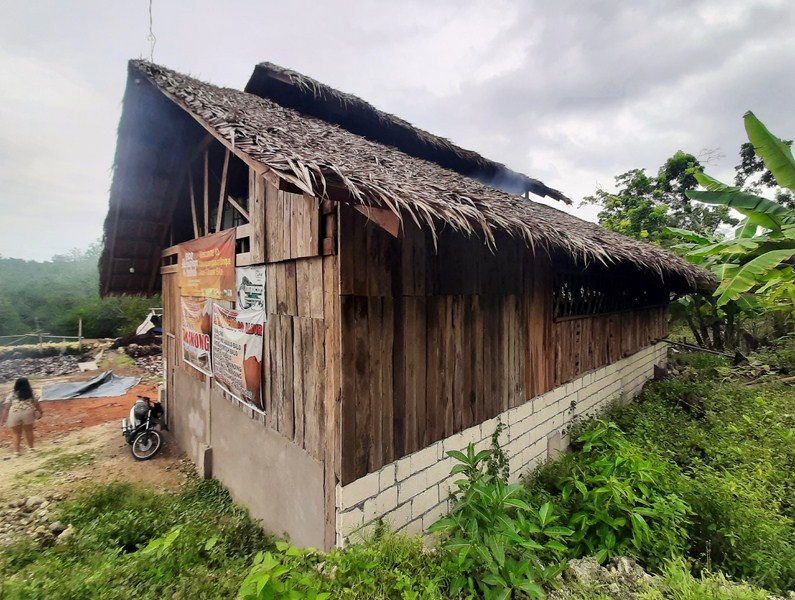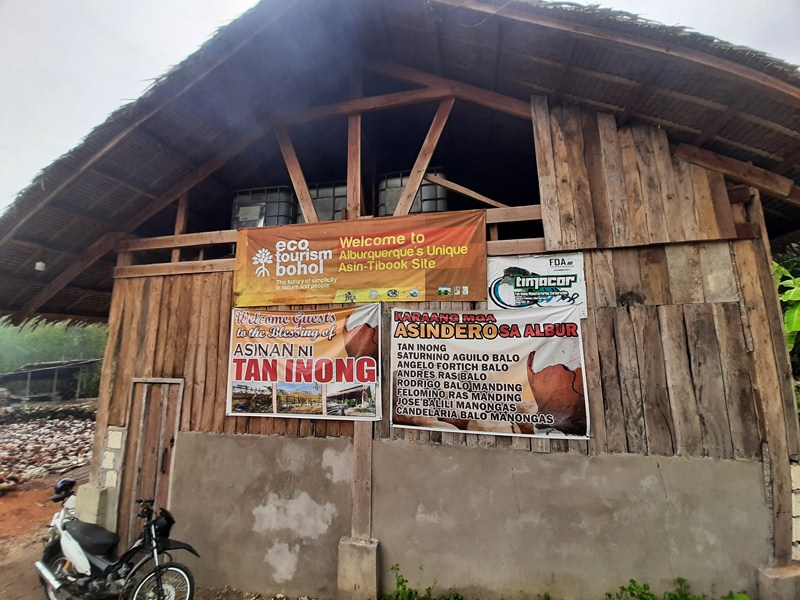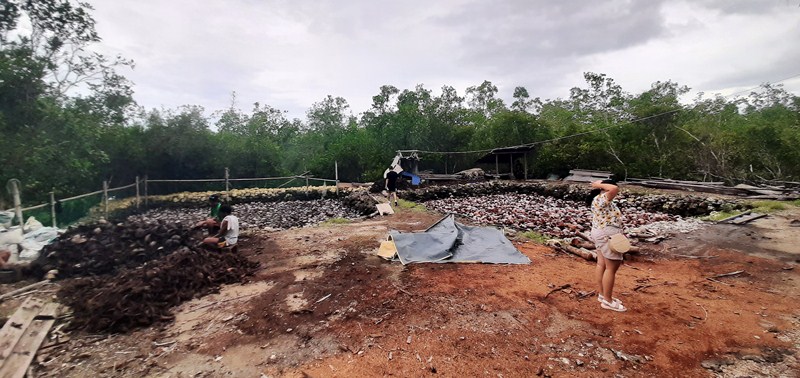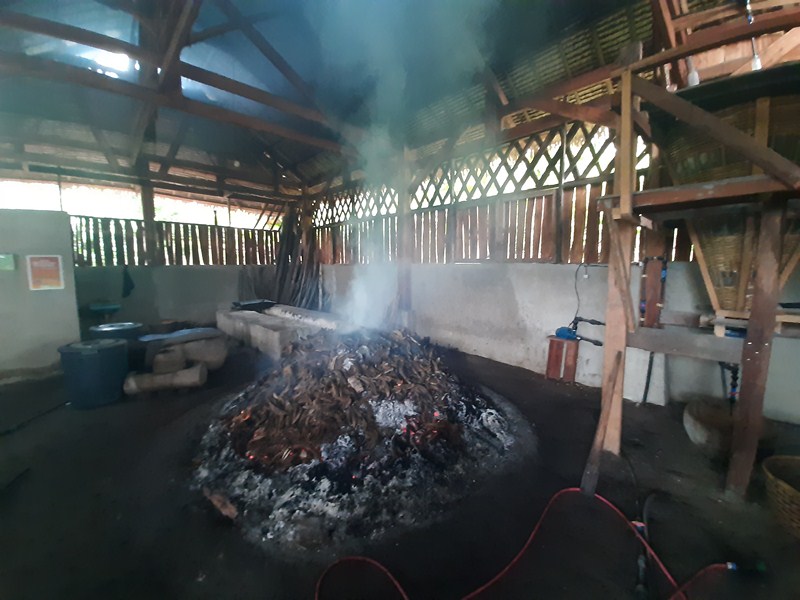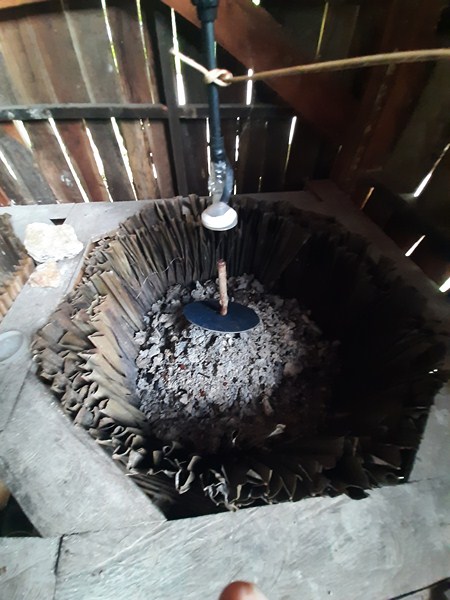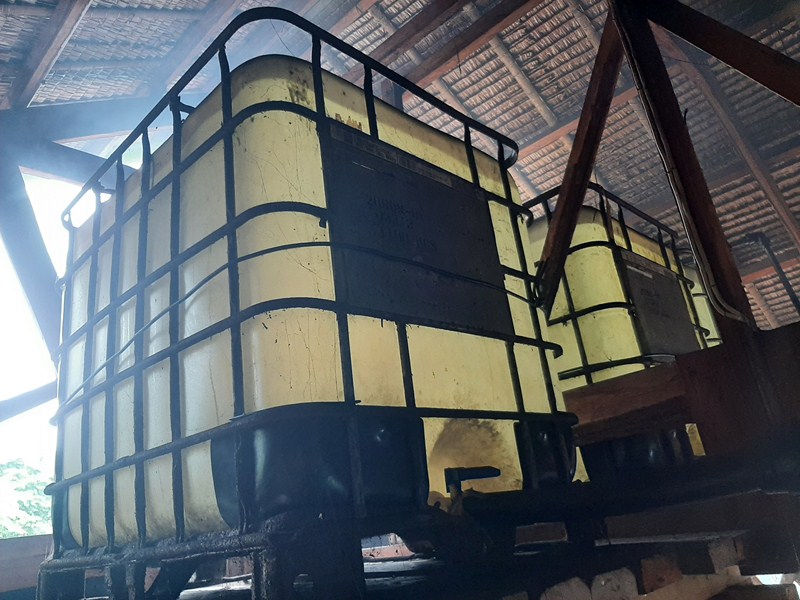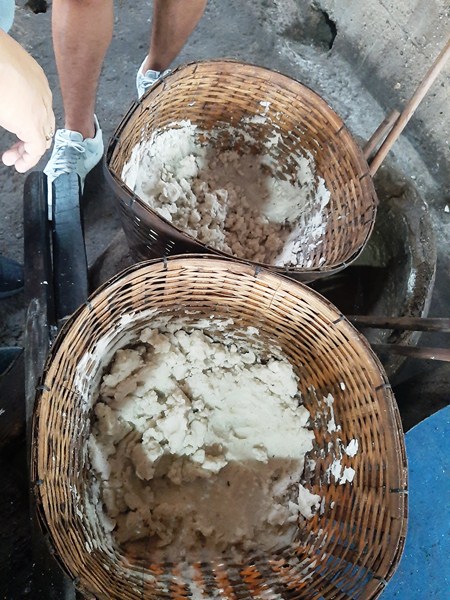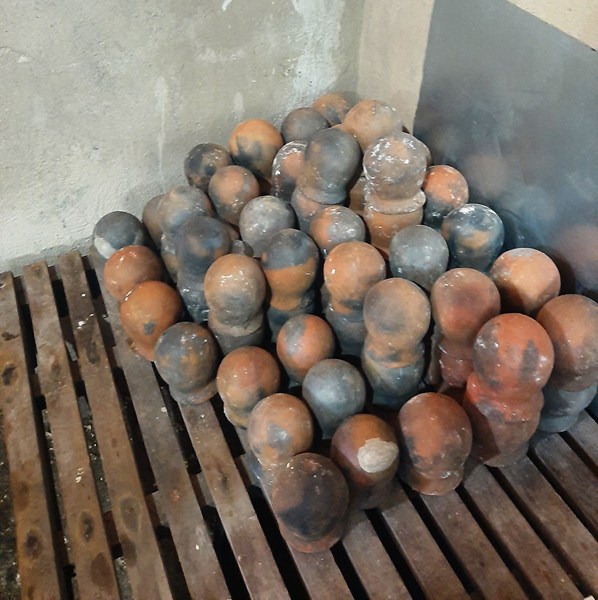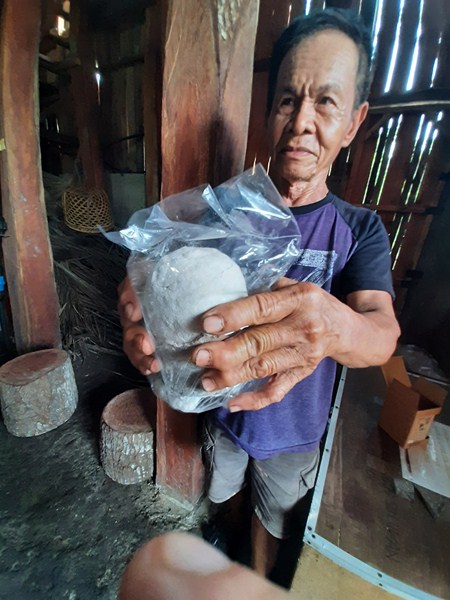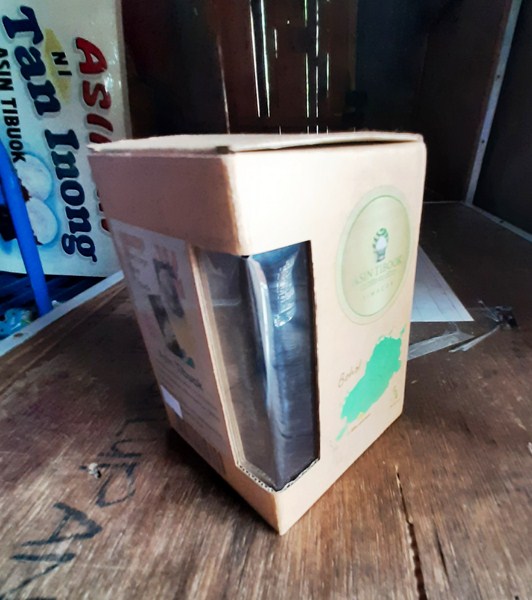From Loboc, we proceeded to Alburquerque (Albur for short) where we visited a remote village to see how the legendary asín tibuok (literally meaning “unbroken salt” or “whole salt” in the Cebuano language of the Boholano people), a rare Filipino artisanal sea salt from Bohol, is made at the Asinan ni Tan Inong.
Made by filtering seawater through ashes, it is usually consumed by being traditionally dusted lightly over plain hot rice, with a few drops of oil, and eaten as is, it is also used to season sinangag (traditional fried rice). Asín tibuok could be grounded and used like regular table salt or chunks can also be broken off and dipped into stews and dishes. A variant of the salt, also known as túltul (meaning “lump”) in Guimaras or dúkdok (meaning “pounded” or “pulverized”) in Capiz, is made similarly to asín tibuok but is boiled with gatâ (coconut milk).
Due to the time-consuming traditional methods of producing salt and the hard work that go with its manufacture, the passing of the salt iodization (ASIN) law (Republic Act No. 8172) in 1995, as well as competition with modern and cheap imported salts prevalent today in the Philippines, the tradition of making asín tibuok and túltul is nearly extinct as it placed further stress on local artisanal salt-makers, forcing many to give up the industry altogether. Today, only a few families make asín tibuok and túltul and, due to their rarity, are considerably more expensive than regular salt.
Commonly sold for the tourist trade (for their novelty) as well as to gourmet restaurants that feature Filipino cuisine, the demand for asín tibuok and túltul is usually high but the supply simply cannot keep up. Offering an equally special flavor that undoubtedly makes it one of the rarest kinds of salt in the world, asín tibuok is now listed in the Ark of Taste international catalogue of endangered heritage foods by the Slow Food movement.
At the Asinan ni Tan Inong, the 72 year old Nestor Manongas explained the unique and meticulous process in the manufacture of asin tibuok. The Manongas family is the only one family still upholding this tradition in Poblacion, preserving a part of their history that makes use of nature’s best without harming it.
Firstly, for several months, coconut husks are left to soak in special pits continually filled with seawater during the tides so that they can absorb the natural sea minerals along the coastline, giving us an idea of how long it takes just to acquire the natural minerals required for asin tibuok’s unique taste which gives off a unique smoky and salty flavor which is tastier and sharper than the kinds of salt you would find in grocery.
Next, the coconut husks are then chopped into small pieces and sun-dried for at least 2 to 3 days. After that, for about a week, these husks are slowly burned in a pile, strictly using native hardwoods such as ipil-ipil, mahogany and duhat, until reduced completely to an activated charcoal (called gasang) which are gathered into a funnel-shaped bamboo filtering device. Seawater is poured into the gasang, allowing the water to leach out the salt from the ashes. The brine or filtered seawater (known as tasik) is then collected into a hollowed out coconut trunk beneath the funnels. This coconut charcoal combination provides the unique aroma of asin tibuok.
The tasik is poured into special dinosaur egg-shaped clay pots and hung in walls in a special furnace where it is boiled for a few hours. Once some evaporate, the pots are continually replenished with more tasik. As both the heat and salt must not be left alone, this final process requires focus and dedication. As more water evaporates, the sea salt gets harder and the process continues until the clay pot gets filled with hard rock salt.
Eventually, the pots will crack, revealing the solidified pinkish mass of salt which is initially very hot. After following this heating process all day, it then requires a whole evening before it will be cool enough to be handled. The finished product is a salt orb in various shades of white, grey and brown and weighing roughly a kilo. As they are sold along with the broken domed pots, they are given them the nickname, in international markets, “the dinosaur egg” due to their appearance. Only 120 pieces of asin tibuok’ are made per batch and these are usually sold out for weeks.
Asinan ni Tan Inong: Brgy. Eastern Poblacion, Alburquerque 6301, Bohol. Mobile number: (0907) 168-0961. Open Mondays-Saturdays, 8 AM to 5 PM.

